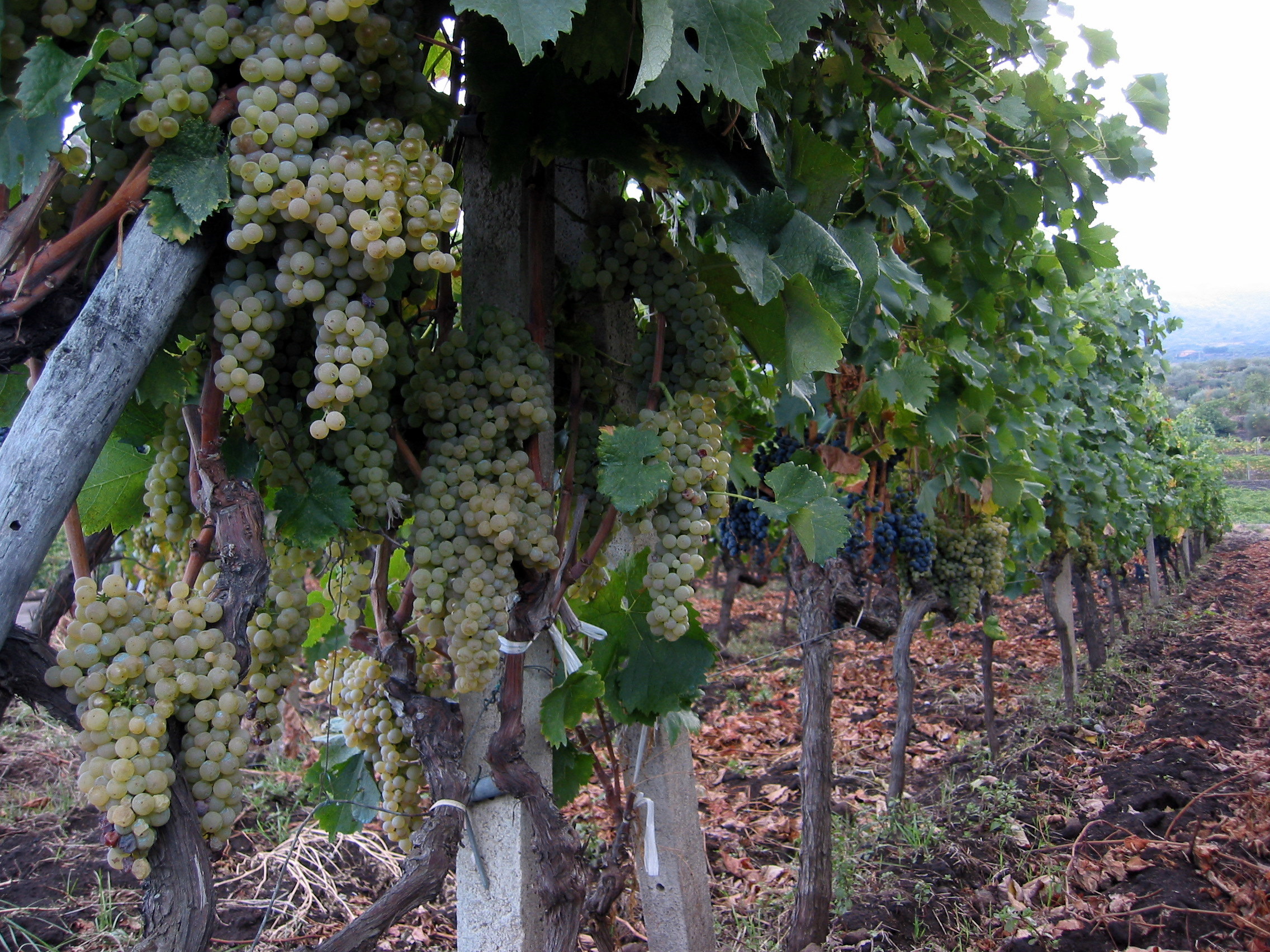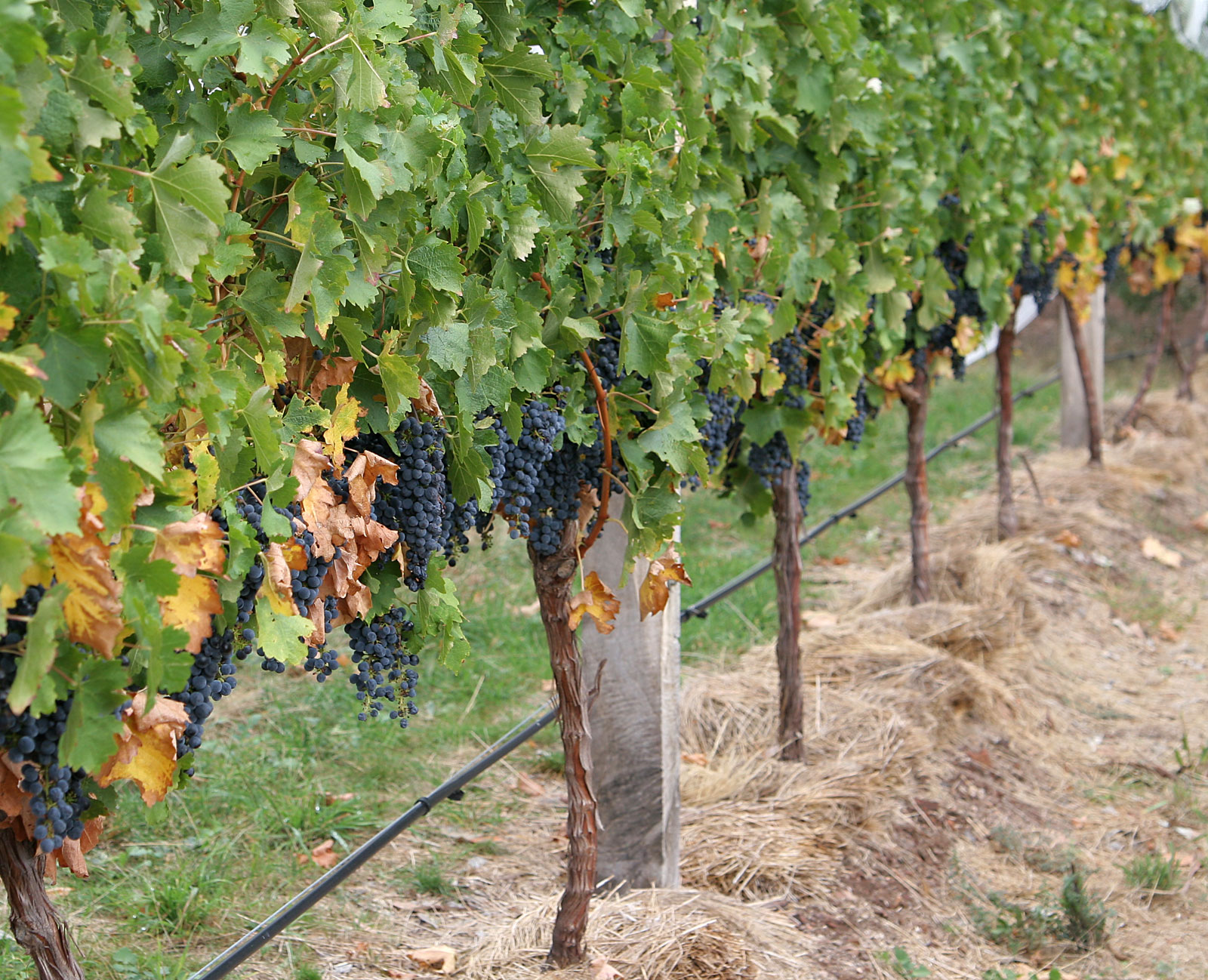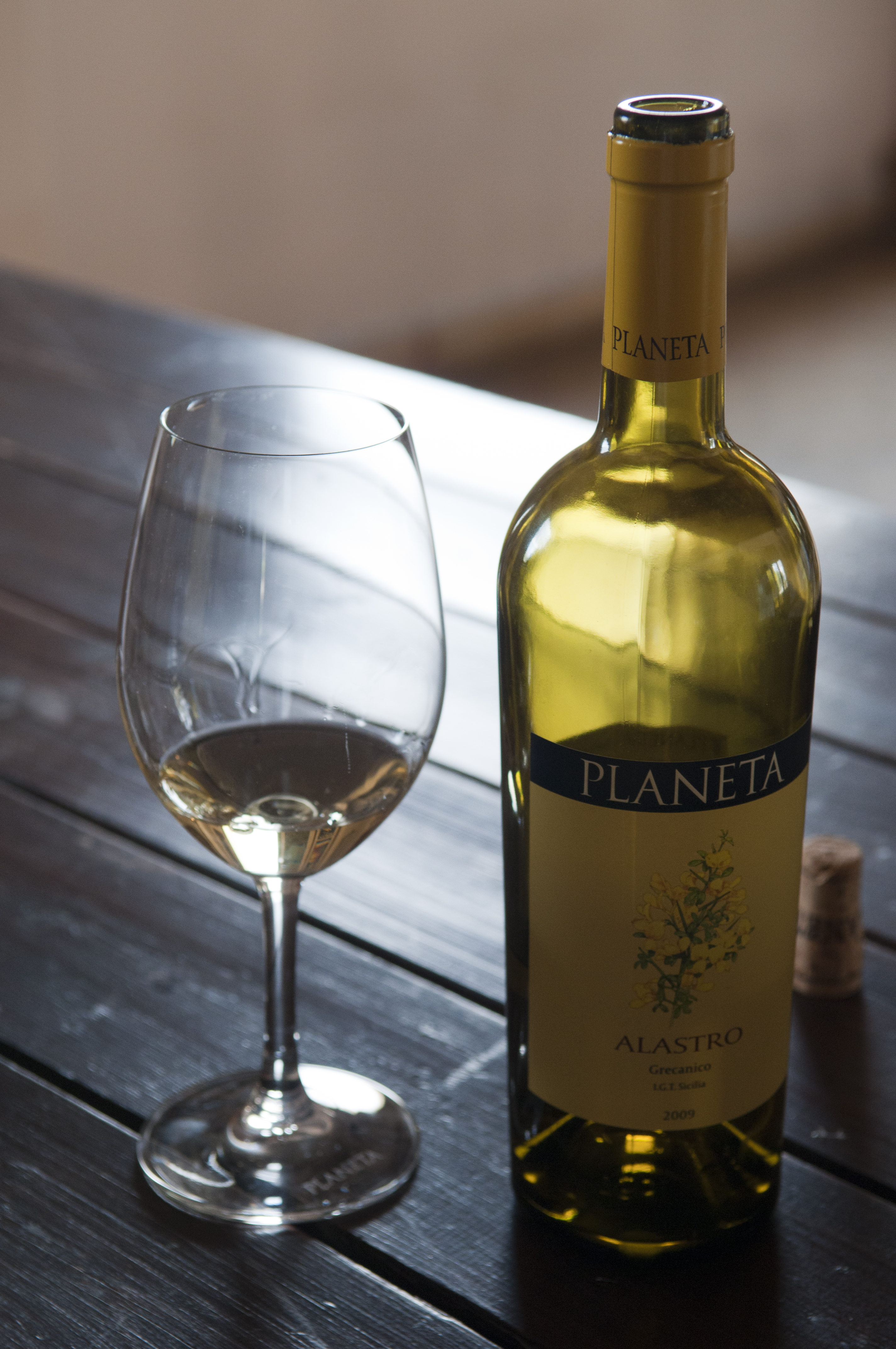|
Bigolona
Bigolona is a white Italian wine grape variety from the Valpolicella region of northeast Italy where it has been growing since at least the early 19th century. The wine has traditionally been used in the production of late harvest and botrytized dessert wines with the grape's synonym ''Smarzirola'' being derived from the Italian ''marcire'' meaning "to rot".J. Robinson, J. Harding and J. Vouillamoz ''Wine Grapes - A complete guide to 1,368 vine varieties, including their origins and flavours'' pgs 107-108 Allen Lane 2012 History Bigolona was first documented growing in the Valpolicella region in the early 19th century. By the 1970s, the grape was on the verge of extinction until viticulturalists at the Istituto Sperimentale per la Viticoltura in Conegliano and Verona began propagating cuttings to preserve the endangered vine. While the grape was not yet listed on the official register of Italian grape varieties in time for the 2000 census, producers within the Veneto ''Indicazi ... [...More Info...] [...Related Items...] OR: [Wikipedia] [Google] [Baidu] |
Grape Variety
This list of grape varieties includes cultivated grapes, whether used for wine, or eating as a table grape, fresh or dried (raisin, currant, sultana). For a complete list of all grape species including those unimportant to agriculture, see Vitis. The term ''grape variety'' refers to cultivars rather than actual botanical varieties according to the International Code of Nomenclature for Cultivated Plants, because they are propagated by cuttings and may have unstable reproductive properties. However, the term ''variety'' has become so entrenched in viticulture that any change to using the term ''cultivar'' instead is unlikely. Single species grapes While some of the grapes in this list are hybrids, they are hybridized within a single species. For those grapes hybridized across species, known as interspecific hybrids, see the section on multispecies hybrid grapes below. ''Vitis vinifera'' (wine) Red grapes White grapes Rose Grapes ''Vitis vinifera'' (table) ... [...More Info...] [...Related Items...] OR: [Wikipedia] [Google] [Baidu] |
Valpolicella
Valpolicella (, , ) is a viticultural zone of the province of Verona, Italy, east of Lake Garda. The hilly agricultural and marble-quarrying region of small holdings north of the Adige is famous for wine production. Valpolicella ranks just after Chianti in total Italian ''Denominazione di Origine Controllata'' (DOC) wine production.J. Robinson (ed) ''"The Oxford Companion to Wine"'' Third Edition, pp. 19, 726. Oxford University Press 2006 . The red wine known as Valpolicella is typically made from three grape varieties: Corvina Veronese, Rondinella, and Molinara. A variety of wine styles is produced in the area, including a ''recioto'' dessert wine and Amarone, a strong wine made from dried grapes. Most basic Valpolicellas are light, fragrant table wines produced in a '' novello'' style, similar to Beaujolais nouveau and released only a few weeks after harvest. Valpolicella Classico is made from grapes grown in the original Valpolicella production zone. Valpolicella Superio ... [...More Info...] [...Related Items...] OR: [Wikipedia] [Google] [Baidu] |
Conegliano
Conegliano (; Venetian: ''Conejan'') is a town and ''comune'' of the Veneto region, Italy, in the province of Treviso, about north by rail from the town of Treviso. The population of the city is of people. The remains of a 10th-century castle are situated on a hill that dominates the town. Formerly belonging to the Bishop of Vittorio Veneto, what remains is a bell tower, which now houses a small museum, and outer walls. On 7 July 2019, Le Colline del Prosecco di Conegliano e Valdobbiadene was inscribed as a UNESCO World Heritage Site. Industry Conegliano is noted for its wine, chiefly the dry white Prosecco (made from the glera grape) which comes in three varieties: tranquillo (still), frizzante (slightly sparkling) and spumante ( sparkling). It is also home to Italy's oldest and most prestigious wine school called Scuola Enologica. It is also home to the Istituto Sperimentale per la Viticoltura where several Italian grape varieties have been bred, including Albarossa, ... [...More Info...] [...Related Items...] OR: [Wikipedia] [Google] [Baidu] |
Italian Grape Varieties ...
References Supplemental references used for chart *J. Robinson, J. Harding and J. Vouillamoz ''Wine Grapes - A complete guide to 1,368 vine varieties, including their origins and flavours'' pgs XXVIII-XXX Allen Lane 2012 {{DEFAULTSORT:Italian grape varieties, List of Italian wine * Wine-related lists Grape A grape is a fruit, botanically a berry, of the deciduous woody vines of the flowering plant genus '' Vitis''. Grapes are a non- climacteric type of fruit, generally occurring in clusters. The cultivation of grapes began perhaps 8,000 years a ... [...More Info...] [...Related Items...] OR: [Wikipedia] [Google] [Baidu] |
Italian Wine
Italian wine is produced in every region of Italy. Italy is the world's largest producer of wine, with an area of under vineyard cultivation, and contributing a 2013–2017 annual average of 48.3 million hl of wine. In 2018 Italy accounted for 19 per cent of global production, ahead of France (17 per cent) and Spain (15 per cent). Italian wine is both exported around the world and popular domestically among Italians, who consume an average of 42 litres per capita, ranking fifth in world wine consumption. The origins of vine-growing and winemaking in Italy has been illuminated by recent research, stretching back even before the Phoenician, Etruscans and Greek settlers, who produced wine in Italy before the Romans planted their own vineyards. The Romans greatly increased Italy's viticultural area using efficient viticultural and winemaking methods. History Vines have been cultivated from the wild ''Vitis vinifera'' grape for millennia in Italy. It was previously believed t ... [...More Info...] [...Related Items...] OR: [Wikipedia] [Google] [Baidu] |
Canopy (wine)
In viticulture, the canopy of a grapevine includes the parts of the vine visible aboveground - the trunk, cordon, stems, leaves, flowers, and fruit. The canopy plays a key role in light energy capture via photosynthesis, water use as regulated by transpiration, and microclimate of ripening grapes. Canopy management is an important aspect of viticulture due to its effect on grape yields, quality, vigor, and the prevention of grape diseases. Various viticulture problems, such as uneven grape ripening, sunburn, and frost damage, can be addressed by skillful canopy management.Weiss, S.B., D.C. Luth, and B. Guerra. 2003. Potential solar radiation in a VSP trellis at 38°N latitude. ''Practical Winery and Vineyard'' 25:16-27. In addition to pruning and leaf trim, the canopy is often trained on trellis systems to guide its growth and assist in access for ongoing management and harvest.J. Robinson (ed) ''"The Oxford Companion to Wine"'' Third Edition pp. 134-135 Oxford University P ... [...More Info...] [...Related Items...] OR: [Wikipedia] [Google] [Baidu] |
Garganega
Garganega (, ; meaning "from Gargano") is a variety of white Italian wine grape widely grown in the Veneto region of North East Italy, particularly in the provinces of Verona and Vicenza. It is Italy's 6th most widely planted white grape. It forms the basis of Venetian white wine Soave and is also a major portion of the blend used to make Gambellara. J. Robinson (ed): ''"The Oxford Companion to Wine"''. Third Edition , p. 297. Oxford University Press 2006 . DNA typing studies in 2003 and 2008 have confirmed that the Grecanico Dorato (Grecanico) grape of Sicily is identical to Garganega. Already before these studies, ampelographers believed the grapes to be related due to the similarities of clusters, berries and leaf characteristics. Oz Clarke: ''Encyclopedia of Grapes'', p. 91. Harcourt Books 2001 . Wine regions In the Soave region, Garganega is the primary grape and can compose anywhere from 70 to 100 % of the blend with Trebbiano and Chardonnay being its usual blending part ... [...More Info...] [...Related Items...] OR: [Wikipedia] [Google] [Baidu] |
Varietal
A varietal wine is a wine made primarily from a single named grape variety, and which typically displays the name of that variety on the wine label.The American Heritage Dictionary of the English Language, Fourth Edition, 2000.winepros.com.au. Examples of grape varieties commonly used in varietal wines are Cabernet Sauvignon, Chardonnay and Merlot. Wines that display the name of two or more varieties on their label, such as a Chardonnay-Viognier, are ''blends'' and not varietal wines. The term is frequently misused in place of vine variety; the term ''variety'' refers to the vine or grape, while ''varietal'' refers to the wine produced by a variety. The term was popularized in the US by Maynard Amerine at the University of California, Davis after Prohibition seeking to encourage growers to choose optimal vine varieties, and later promoted by Frank Schoonmaker in the 1950s and 1960s, ultimately becoming widespread during the California wine boom of the 1970s. Varietal wines ar ... [...More Info...] [...Related Items...] OR: [Wikipedia] [Google] [Baidu] |
Passito
Straw wine, or raisin wine, is a wine made from grapes that have been dried to concentrate their juice. The result is similar to that of the ice wine process, but is a much older process and suitable for warm climates. The technique dates back to pre-Classical times with wines becoming fashionable in Roman times and in late Medieval/Renaissance Europe when wines such as Malmsey ('Malvasia' originally from Greece) and Candia (from Crete) were highly sought after. Traditionally, most production of these wines has been in Greece, the islands of Sicily, Cyprus, Northern Italy and the French Alps. However, producers in other areas now use the method as well. Under the classic method, after a careful hand harvest, selected bunches of ripe grapes will be laid out on mats in full sun. (Originally the mats were made of straw, but these days the plastic nets for the olive harvest are likely to be used). This drying will probably be done on well exposed terraces somewhere near the wine pr ... [...More Info...] [...Related Items...] OR: [Wikipedia] [Google] [Baidu] |
Vin Santo
Vin Santo ("holy wine") is a style of Italian dessert wine. Traditional in Tuscany, these wines are often made from white grape varieties such as Trebbiano and Malvasia, though Sangiovese may be used to produce a ''rosé'' style known as "Occhio di Pernice" or eye of the partridge. The wines may also be described as straw wines since they are often produced by drying the freshly harvested grapes on straw mats in a warm and well ventilated area of the house. (However, several producers dry the grapes by hanging on racks indoors.) Though technically a dessert wine, a Vin Santo can vary in sweetness levels from bone dry (like a Fino Sherry) to extremely sweet. While the style is believed to have originated in Tuscany, examples of Vin Santo can be found throughout Italy and it is an authorised style of wine for several ''Denominazione di origine controllata'' (DOCs) and '' Indicazione geografica tipica'' (IGTs).J. Robinson (ed) ''"The Oxford Companion to Wine"'' Third Edition p ... [...More Info...] [...Related Items...] OR: [Wikipedia] [Google] [Baidu] |
Province Of Verona
The Province of Verona ( it, Provincia di Verona) is a province in the Veneto administrative region of Italy. On its northwestern border, Lake GardaItaly's largestis divided between Verona and the provinces of Brescia ( Lombardy region) and Trentino (Trentino-Alto Adige/Südtirol region). Its capital is the city of Verona. The city is a UNESCO World Heritage Site. The province is cosmopolitan in nature. It is bordered by Italian Tyrol in the north, Province of Vicenza and Province of Padua in the east. Province of Rovigo and Province of Mantua in south and Lake Garda in the west. From north to south the maximum extent of the province is 50 miles while it is 25 miles from east to west. Overview The province has an area of and a total population of about 0.9 million. There are 98 '' comuni'' (singular: ''comune'') in the province. Important ''comuni'' include Bovolone, Bonavigo, Bussolengo, Cerea, Isola della Scala, Legnago, Negrar, Peschiera del Garda, San Bonifacio, ... [...More Info...] [...Related Items...] OR: [Wikipedia] [Google] [Baidu] |
Illasi
Illasi is a ''comune'' (municipality) in the Province of Verona in the Italian region Veneto, about west of Venice and about east of Verona. As of 31 December 2004, it had a population of 5,112 and an area of .All demographics and other statistics: Italian statistical institute Istat. The municipality of Illasi contains the ''frazioni'' (subdivisions, mainly villages and hamlets) Cellore and Donzellino. Illasi borders the following municipalities: Cazzano di Tramigna, Colognola ai Colli, Lavagno, Mezzane di Sotto, and Tregnago. History The area was inhabited since the Bronze Age: during 2007 a burial ground with 63 tombs, dated 2nd millennium BC, was discovered near the village of Arano. Several remains were found of the Roman presence in the area: the stones, now mainly in the Museo Maffeiano in Verona, show a population composed of retired veterans, to whom, after service, the Roman Emperors assigned pieces of land to be cultivated (mainly cereals, but also vineyards an ... [...More Info...] [...Related Items...] OR: [Wikipedia] [Google] [Baidu] |









